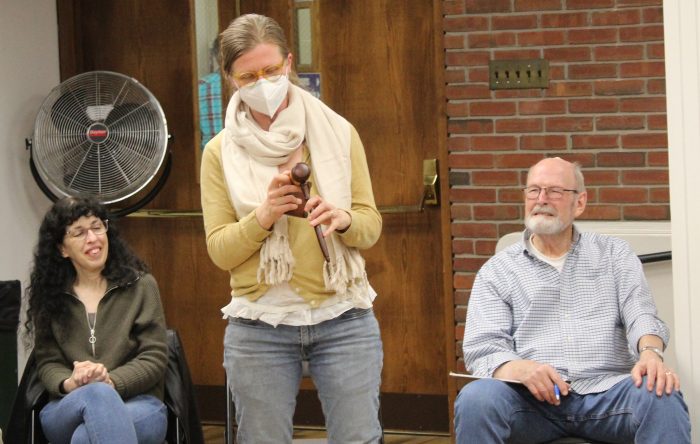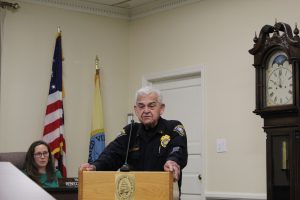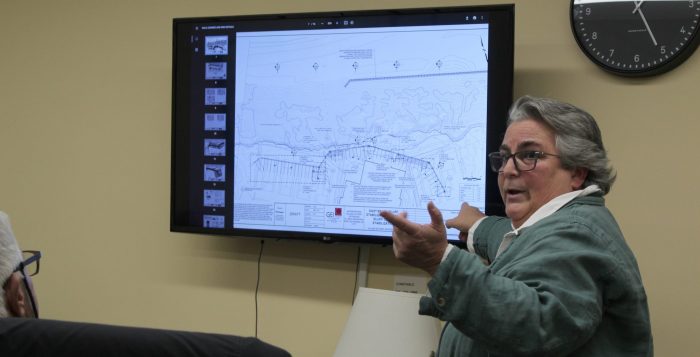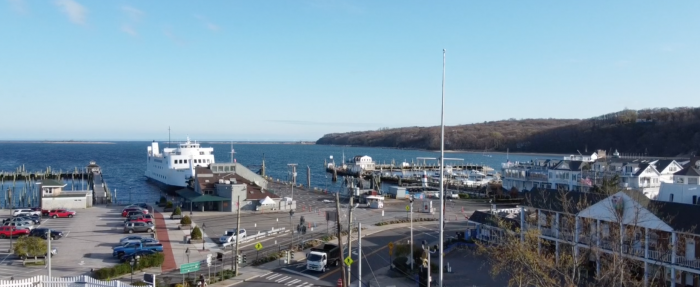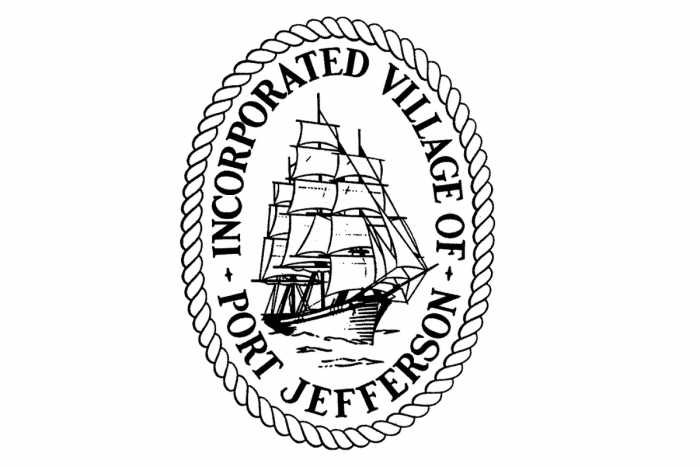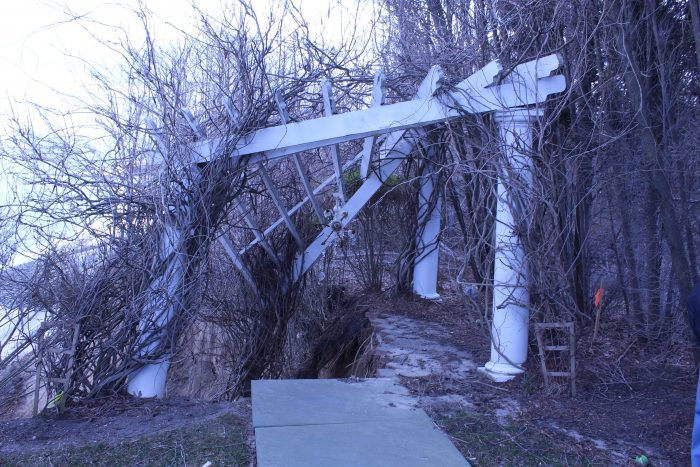The general meeting of the Port Jefferson Civic Association on April 12 was briefly delayed due to a lack of chairs as over three dozen people filled the Meeting Room at the Port Jefferson Free Library.
The body approached an array of local issues, from the East Beach bluff to flooding to green space preservation, among others. With village elections along the horizon and plenty of business on the local agenda, the civic has quickly emerged as a forum for the many interests and stakeholders of the community.
East Beach bluff
Former Village of Port Jefferson Mayor Mike Lee made a presentation on historical and environmental developments at East Beach, which has eroded considerably in recent years, now endangering the Port Jefferson Country Club restaurant and catering facility from falling off the cliff.
During his administration, Lee said an engineer had advised him that a problem with the jetty system at Mount Sinai Harbor was contributing to the erosion, placing village officials in a difficult bind.
“The village was aware of [the jetty problem], but it’s not our property that we can work on,” Lee said. “We don’t have anything to do with the inlet,” which the Town of Brookhaven maintains.
Given how coastal erosion spans across municipal boundaries, Lee suggested bluff stabilization would not yield a long-term resolution. “Stabilizing, it’s going to be a never-ending battle,” the former mayor said.
Ray Calabrese, a former Brookhaven Town councilman and Port Jefferson Planning Board member, conveyed to the body engineering advice he received in the 1970s.
“Leave that bluff alone,” he said. “Nature is doing its thing. It’s replenishing that beach. Frustrate it, and you lose the beach.” He concluded, “Don’t build near bluffs.”
Civic president Ana Hozyainova noted that among other reasons, PJCA was formed to offer residents a louder voice in decision-making over the bluff.
“One of the animating reasons why we got together as a civic association was the bluff and the fact that we didn’t have a vote and a public discussion about what needs to be done with it,” she said.
Flooding
Lee also touched upon ongoing flooding concerns within Port Jefferson, which was originally called Drowned Meadow due to the phenomenon. Though stormwater infrastructure installed decades ago may have been satisfactory for its time, Lee said, the flood load has increased considerably, aggravating these historic challenges.
“We have an inadequate stormwater system,” he said. “When it was built, it was adequate for then, but we have just too much to deal with. It just floods and backs up, and the bad part about it is that it invades the sanitary system.”
PJCA member Michael Mart expressed alarm over the long-term prospects of the Port Jefferson Fire Department’s fire station on Maple Place, which in a recent climate resilience meeting was noted for heightened risk of flooding. [For more on this village meeting, see story, “As Port Jeff braces for heightened flooding,” The Port Times Record, April 13.]
“My question is this: Does the fire department or the village have the right of eminent domain for properties that we desperately need?” Mart said. “If we do have that, aren’t we obligated for the long run to pursue that as far as we can?”
Land use
Much discussion centered on potential code changes to protect trees, preserve open space and limit clearing of woodlands. With a village public hearing scheduled for May 1 on the future development of the Maryhaven property, the body discussed whether new development is environmentally optimal.
Civic vice president Holly Fils-Aime tied the issues of flooding and land development, stating that additional paved surfaces could exacerbate concerns over stormwater runoff.
“Everybody is seeing the flooding — the roads become rivers — and it actually ends up in the harbor,” Fils-Aime said. “None of this is really filtered in any way, and the more development we have obviously adds more stress on all of these systems.”
Citing a 2016 report from the New York State Comptroller’s Office, the vice president added that preserving existing green spaces and creating new ones serves a wide array of fruitful purposes.
The report mentions open spaces can protect water quality, protect biodiversity and promote outdoor recreation, among other public benefits.
“My real worry is that the more development we have, the less our village is going to be viable in terms of drinking water,” Fils-Aime said.
PJCA will meet next on Wednesday, May 10, at 7 p.m. in the Port Jefferson Free Library. Candidates for village offices have been invited to present to the body.

